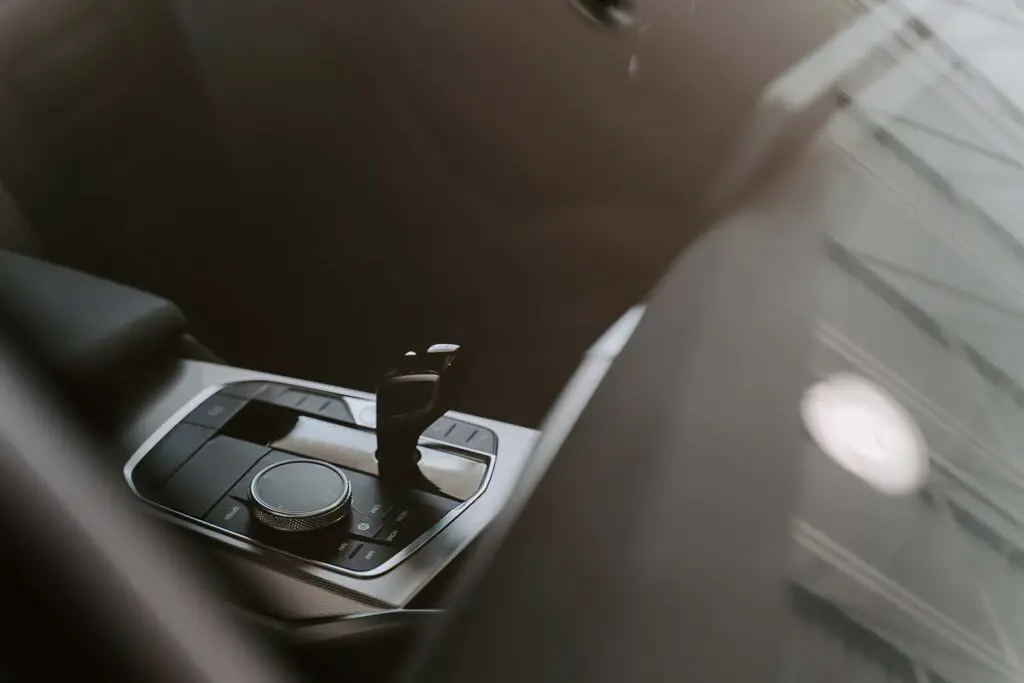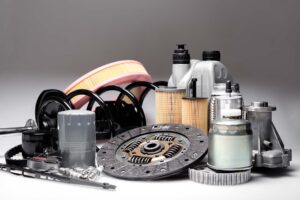If you’re into cars and racing, or you’ve been around gearheads for some time now, you’ve probably heard the term quite often and wondered – what is a short shifter? So, let’s settle this confusion once and for all and explain all of the ins and outs of this popular four-wheeler modification. Buckle up, it’s going to be a thrilling ride!
A short shifter is one of the most common modifications when it comes to vehicles that use a manual transmission. Essentially, it’s a shortened gear lever that reduces the distance the lever has to travel between gears, allowing for faster and more precise shifting. It’s a small upgrade that can go a long way and make a big difference in the overall driving experience.
What Is a Short Shifter Exactly?
No matter if you own a brand-new car, a used vehicle, or even one with a salvage title, there are plenty of modifications that can upgrade certain features of your trusty four-wheeler. For cars with a manual transmission, there’s a really popular modification that reduces the distance and travel required to shift between gears. This upgrade is simply known as a short shifter.
Typically, this modification involves replacing the stock gear lever with a modified one that has a shorter height and a shorter throw, allowing for faster and more precise gear changes. That’s why it’s so popular on car tracks and among enthusiasts who participate in motorsports. Speeding down the track or off-road driving – a short gearshift provides a more engaging driving experience and can improve acceleration times.
What Are the Components of a Short Shifter?
Now, let’s take a look at the anatomy of this modification. A short gearshift consists of several components:
- The body of the shifter itself,
- A linkage,
- A shift knob.
Obviously, the shifter is the centerpiece and is responsible for the reduced throw and height. They’re typically made from high-quality materials like billet aluminum or stainless steel, which are durable and long-lasting. Also, they may have adjustable settings, allowing drivers to fine-tune the shift throw and feel as they like.
The linkage is another critical component, as it connects the short gearshift to the transmission and, therefore, the rest of the vehicle’s powertrain. When the gear lever is shorter, the linkage is often more rigid, which reduces flex and provides a more direct connection, resulting in faster and smoother gear changes.
Last but not least, the knob is the component that the driver interacts with directly. Short shifters are mostly combined with a smaller, more ergonomic shift knob that is easier to grip and provides better feedback during gear changes. Now that you understand the most important parts of a short gearshift, it’s time to see the different ways you can go about this vehicle modification.

What Are the Different Types of Short Shifters?
If you’re looking to improve the handling experience of a manual transmission, you should know about the three most popular types of short shifters. But before I start describing these types in greater detail, here’s an overview of their pros and cons.
| Type of Short Shifter | Pros | Cons |
| Drop-In Shifters | Good for beginners as it’s affordable and easy to install | Limited customization options and less significant improvement in handling |
| Adapter Plate Shifters | More customizable with adjustable settings, can get the shifter closer to the driver | Complex installation with additional modifications, not compatible with all models |
| Complete Shifter Assemblies | Most significant improvement in shifting performance with adjustable settings | Also very complex to install with additional modifications, and also not for all models |
As you can see, not all short shifters are created equal. Each type has its benefits but downsides as well. So, let’s take a closer look at the most common types of short gear levers to help you make an informed decision about which one is right for you:
Drop-In Shifters
The first type of short shifter is known as a drop-in, and it’s designed to be a direct replacement for the stock gear lever in a car’s transmission. The name comes from the fact that they are super easy to install by dropping them into the existing gearshift location without any major modifications.
This type of gear lever is usually made from high-quality materials like stainless steel and billet aluminum, and they offer a shorter throw and reduced height compared to the stock shifter. They are the best choice for those who want to upgrade their shifting experience without the need for extensive modifications or adjustments.
Adapter Plate Shifters
Adapter plate shifters are a bit more difficult to install, as they use an adapter plate to reduce the distance and travel required to shift between gears. This adapter plate is put between the stock gear lever and the transmission, and it allows the gearshift to sit lower and closer to the driver.
This type of gearshift modification is popular among car enthusiasts as it offers a more customizable experience, often with adjustable settings that allow drivers to fine-tune the shifter’s handling to their liking. However, it’s not suitable for beginners – installing them takes some auto mechanical knowledge, and they’re not suitable for all models of vehicles.
Complete Shifter Assemblies
When the upgrade entails replacing the entire gearshift mechanism in a car’s transmission, it’s called a complete shifter assembly. This modification offers the most significant improvement in shifting performance compared to the other types of short shifters. It’s typically made from high-quality materials, and it often features adjustable settings for the throw and feel of the gear lever.
As with adapter plate ones, installing the complete package takes a lot of work and knowledge, and it’s the most expensive option out of the three. However, as with high car prices, you get what you pay for – a complete assembly brings significant improvement in performance and handling, so it’s an excellent choice for anyone looking for the ultimate shifting experience.
How Does a Short Shifter Work?
No matter if you’re cruising down the most famous routes in the USA or you’re stuck in traffic in one of the cities with the worst drivers, it’s important to have a gear lever that is comfortable and easy to maneuver. The way that a short gearshift works might just turn out to be an excellent way to modify your vehicle for a more engaging driving experience.
If you’re wondering how the whole thing works and what is a short throw shifter, it’s fairly easy to explain. A short gear lever reduces the distance of the shifter throw, meaning there’s less distance required to switch between gears in a manual transmission four-wheeler. You might be surprised at just how many benefits a shorter throw can bring to the table.
What Are the Advantages of Using a Short Shifter?
Now that you know how it works, it’s important to also understand what you’re getting if you opt for this type of vehicle modification. With a shorter gear lever, the linkage is more rigid and has a direct connection, which provides faster and smoother gear changes, as well as a more immediate response from the whole transmission system.
All of these components add up to bring you a more thrilling and engaging driving experience. If it’s done right, you can even expect improved acceleration times – just make sure you don’t develop any driving anxiety with all that speed.
By now, it’s obvious that this type of vehicle modification can bring significant improvements to how you drive your four-wheeler. For those who prefer manual transmission but are looking for a way to upgrade the whole system, here are the most important advantages of using a shorter gear lever:
- Faster and smoother gear changes – You’ll be able to switch between gears much quicker and more precisely, which makes for a more engaging handling experience,
- Improved driving experience – For some, a shorter gear lever will make them feel more comfortable and connected to the car while driving,
- There are numerous customization options – Most types of short shifters offer adjustable settings that allow you to fine-tune the transmission to your specific needs and likings, which makes for a more customized driving experience,
- High-quality and durable materials – most short gearshifts are made from materials such as stainless steel or billet aluminum, which are much more durable and long-lasting than the materials used for constructing stock shifters.

Short Shifters vs. Stock Shifters – What’s the Difference?
You’ve probably asked yourself – why do people install short gear levers? Is it really that much better than the stock ones? Well, yes, and the difference is very easy to explain – it all comes down to the length of the throw. The typical stock gearshift moves through a gate that can be long, so it requires more maneuvering to engage a gear.
In contrast, gear levers that are on the shorter side are designed to reduce this throw length, resulting in a reduced travel distance needed to engage a gear. But it’s not only about switching through gears faster – you’re getting smoother transitions, improved acceleration times, and, more often than not, a more durable and long-lasting shifter.
By taking into account the aforementioned benefits, it’s easy to understand why this type of upgrade is one of the most popular modifications among car enthusiasts who prefer manual transmission vehicles.

How to Install a Short Shifter – A Step-By-Step Installation Process
Installing a shorter gearshift can be a challenging process, but it is typically manageable for those with some mechanical experience. As mentioned before, the installation process differs depending on what kind of short shifter you want to put in your four-wheeler.
I can’t give you detailed instructions about each way, as you could write a whole book just about this topic, but here is a general step-by-step guide you can expect with each type of short shifter:
- Step 1: Remove the stock gear lever and its mounting hardware from the car’s transmission system. This may involve removing access panels and trim pieces.
- Step 2: Install the short shifter and its mounting hardware onto the transmission system, following the manufacturer’s instructions. Make sure it’s properly aligned and secured.
- Step 3: Install the shorter, more rigid linkage that came with the shorter shifter. This may require additional modifications or adjustments for better performance, especially if you’re installing an adapter plate gearshift or the complete assembly.
- Step 4: Install the smaller, more ergonomic shift knob that came in the package, or you can add a customized one of your choosing.
- Step 5: Test the new manual transmission system to make sure everything works correctly, and adjust any setting or components as needed to achieve the desired feel and performance.
As you can gather from this general guide, it’s important to carefully follow the manufacturer’s instructions and to do your research to find the right gear for your four-wheeler. There are numerous options on the market, and it’s important to find one that is compatible with the exact model of your car. At the end of the day, if you feel like the whole process is too much for you to handle, you can always seek the assistance of a qualified mechanic or automotive technician.

Shift Happens – Upgrade Your Driving Experience with a Short Shifter
All in all, short shifters offer a fantastic way to improve the handling and performance of a manual transmission car. With their reduced throw and increased precision, you’ll surely end up enjoying a much more engaging driving experience and maybe even improved acceleration times. Sure, installing might be a bit tricky, but the benefits are well worth the effort for those who love to drive stick. Are you ready to take your shifting game to a whole new level?








